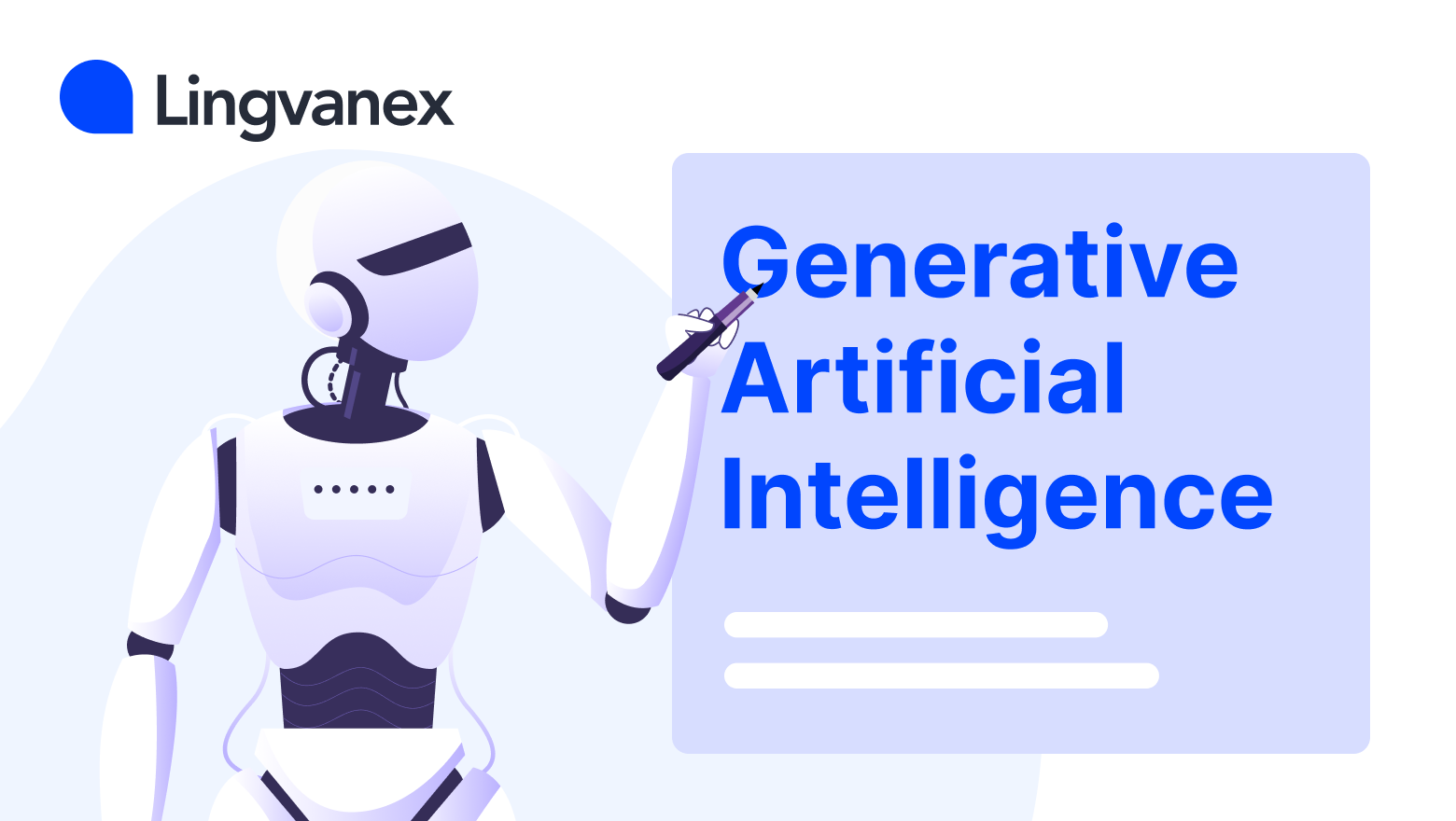What do you picture when you hear about artificial intelligence? Do you think it is a concept from the world of science fiction? In fact, this latest technology is much closer than it seems. It has already become an integral part of everyone's daily life.
Have you ever dealt with an advanced chatbot like ChatGPT that can give a comprehensive answer to almost any question? Or maybe you have already used DALL-E or Midjourney to create impressive images that you could only dream of recently? In this article, we will explain how generative artificial intelligence has ceased to be a fantasy and has become the most important technology of the modern world.

Generative artificial intelligence: what it is
To understand what generative artificial intelligence is, we first need to address the broader definition of artificial intelligence. Artificial intelligence is a technology that uses machine learning and human logic to replicate human actions and behavior.
There are two main types of artificial intelligence: traditional and generative. Traditional artificial intelligence focuses on solving specific tasks based on existing data. The main task of generative artificial intelligence is to create new, unique content based on existing data.
Generative AI uses neural networks of different architectures to independently create new data or original content. These models are capable of generating text, images, videos, music, etc. Let's take a closer look at the underlying basis of such models and their types.
Generative AI models
The main models of generative artificial intelligence include the following:
1. Generative adversarial networks (GAN)
They consist of two neural networks trained in a competitive mode: one network generates new content and the second network evaluates its realism. This process aims to continuously improve the quality of the generated content.
2. Variational autoencoders (VAE)
Such a model is trained to efficiently encode complex data into compact numerical representations, which can then be used to generate new content.
Let's take nature photos as an example. VAE can “compress” such photos by turning them into a small set of numbers — this is the “latent representation” of the image. The model can then use these “latent representations” to generate new, similar images.
3. Recurrent neural networks (RNN)
They create content taking into account previous elements, observing logic and consistency. They make it possible to generate meaningful and coherent texts, as well as melodies and other consistent data types.
4. Transformers
They are based on an attention mechanism that allows modeling long-term dependencies in data. These models are widely used for language understanding, translation and textual data generation.
A prominent example is Lingvanex, a machine translator based on neural networks of the Transformer architecture, which shows the highest results in natural language processing.
How does generative AI work?
The process of all generative artificial intelligence models generally consists of four steps:
1. Data collection and preprocessing
Analyzing large amounts of data is the most important step in the operation of generative artificial intelligence. Various images, video, audio, text and other materials are collected and analyzed in this process.
2. Model training
Once the data is acquired, the artificial intelligence model is trained. During the training process, the model learns the patterns and features present in the training data using machine learning and deep learning algorithms.
3. Content creation
Once training is complete, the model is fully prepared to create content and respond to new instructions. It uses the learned patterns and templates on which it was trained to generate new content or predict outcomes according to the received instructions.
4. Evaluation, setting and improvement
It is important to evaluate the quality of content generated by the model and adjust the parameters if necessary. Humans or smart machines check the performance of generative artificial intelligence using special evaluation metrics. AI is able to learn from mistakes and improve, resulting in a better final product.
Impact of generative AI on industries
Generative artificial intelligence has a significant impact on various spheres of human life and activities:
- Promoting research and innovation:
Generative AI helps researchers analyze complex data, find new patterns, and develop innovative concepts. In pharmacy, for example, it is being used to create and optimize protein sequences, accelerating the development of new medicines and improving medical technology.
- Improving the customer experience:
Chatbots and virtual assistants based on generative AI are able to interact with customers in their natural spoken language. They provide relevant and personalized responses to queries, improving service levels and customer experience.
- Creating new content and products:
Generative AI has great potential to create innovative, high-quality and unique content for marketing, education, entertainment and other industries. It serves as a source of creative ideas in the development of logos, videos, music, clothing, furniture, games and other products.
- Improving machine translation and localization:
Generative AI is a key element in translation applications, providing accurate and natural translations. It allows text to be adapted to the linguistic and cultural characteristics of other languages and regions, improving the quality of content localization.
In general, the latest generative AI technology provides new opportunities to accelerate research, improve customer service, create new products and original content, and improve the quality of machine translation.
Lingvanex, as a machine translator based on neural networks, has a number of advantages due to its built-in generative AI. This is reflected in more accurate and natural translation with a better understanding of the context, and the ability of customization for any specialized subject area. Distinctive features of Lingvanex are multilingualism (it supports 109 world languages) and continuous self-learning, which helps to improve the quality of translations over time.
Conclusion
Artificial intelligence is becoming an integral part of our lives. Sooner or later, everyone will face its influence, be it in everyday life or in work. Generative AI, in particular, has both positive and negative aspects.
Firstly, it has great potential to produce unique content and stimulate creativity. Secondly, optimizing processes and their speed will improve efficiency and productivity. However, ethical issues arise such as originality and possible bias of algorithms. It is important to consider these aspects and use generative artificial intelligence responsibly to take full advantage of its benefits while minimizing potential limitations.



